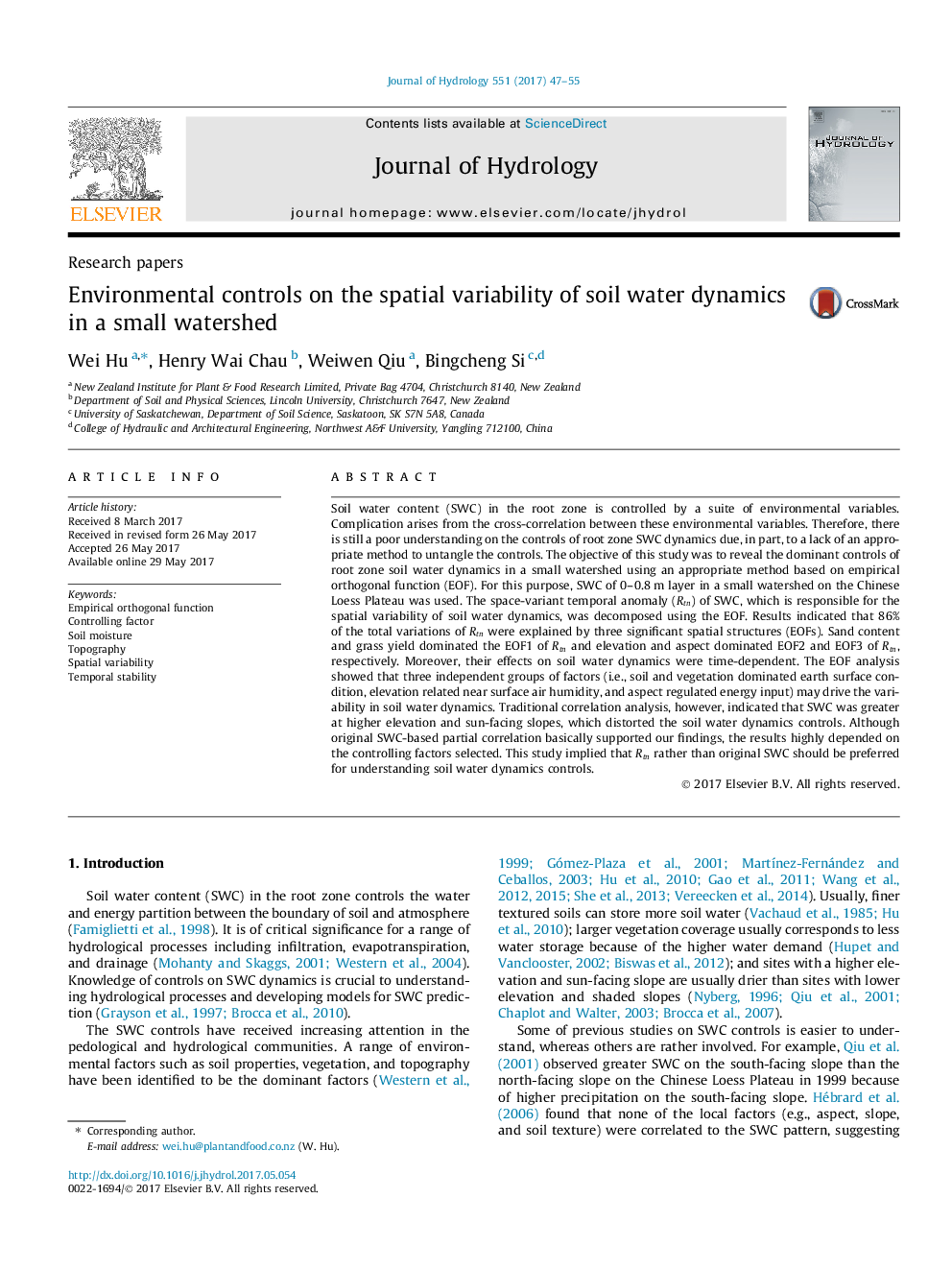| کد مقاله | کد نشریه | سال انتشار | مقاله انگلیسی | نسخه تمام متن |
|---|---|---|---|---|
| 5770884 | 1629903 | 2017 | 9 صفحه PDF | دانلود رایگان |
- Soil water dynamics control revealed by EOF analysis of space-variant temporal anomaly.
- Sand content and grass yield dominated soil water dynamics.
- Role of topography in soil water dynamics was not always negligible.
- EOF method improved understanding of soil water dynamics.
Soil water content (SWC) in the root zone is controlled by a suite of environmental variables. Complication arises from the cross-correlation between these environmental variables. Therefore, there is still a poor understanding on the controls of root zone SWC dynamics due, in part, to a lack of an appropriate method to untangle the controls. The objective of this study was to reveal the dominant controls of root zone soil water dynamics in a small watershed using an appropriate method based on empirical orthogonal function (EOF). For this purpose, SWC of 0-0.8Â m layer in a small watershed on the Chinese Loess Plateau was used. The space-variant temporal anomaly (Rtn) of SWC, which is responsible for the spatial variability of soil water dynamics, was decomposed using the EOF. Results indicated that 86% of the total variations of Rtn were explained by three significant spatial structures (EOFs). Sand content and grass yield dominated the EOF1 of Rtn and elevation and aspect dominated EOF2 and EOF3 of Rtn, respectively. Moreover, their effects on soil water dynamics were time-dependent. The EOF analysis showed that three independent groups of factors (i.e., soil and vegetation dominated earth surface condition, elevation related near surface air humidity, and aspect regulated energy input) may drive the variability in soil water dynamics. Traditional correlation analysis, however, indicated that SWC was greater at higher elevation and sun-facing slopes, which distorted the soil water dynamics controls. Although original SWC-based partial correlation basically supported our findings, the results highly depended on the controlling factors selected. This study implied that Rtn rather than original SWC should be preferred for understanding soil water dynamics controls.
Journal: Journal of Hydrology - Volume 551, August 2017, Pages 47-55
